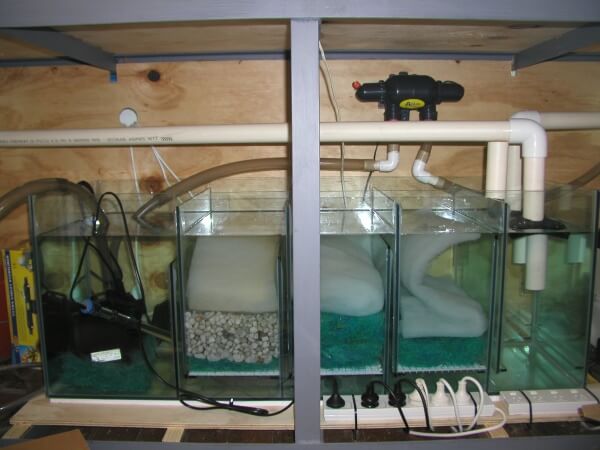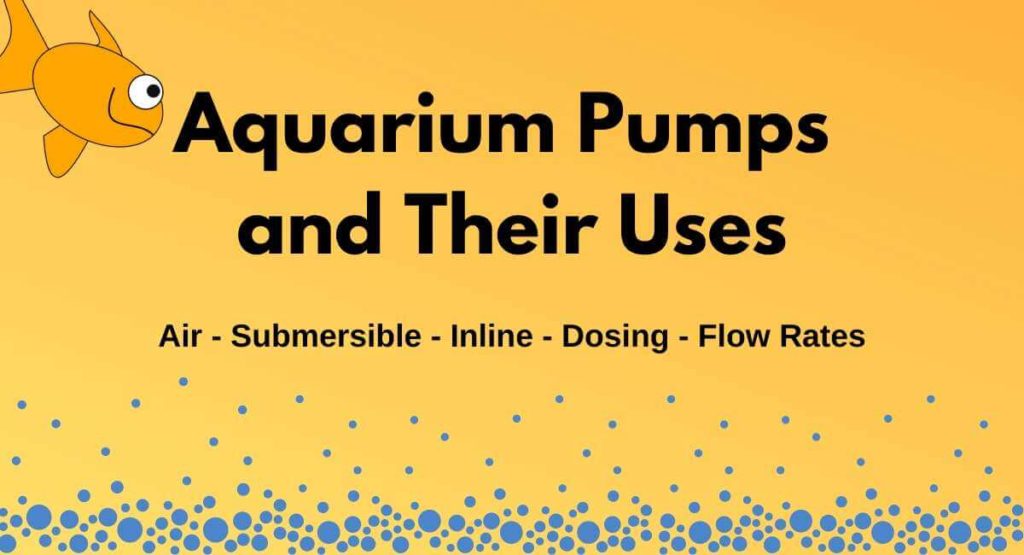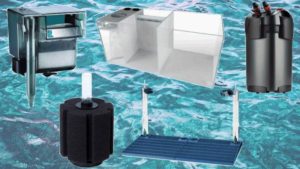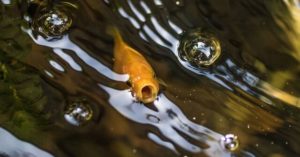Sharing is caring!
Aquarium pumps are an essential piece of equipment for your fish tank set-up. You’d be hard-pressed to find a set-up that doesn’t use some sort of pump or another. Pumps are used to move either air or water from one place to another. The type of pump you use is determined by your needs. Let’s dive in.
Aquarium air pumps
Air pumps can have several uses in an aquarium. They can operate decorations, such as those bubbling treasure chests, or provide a decorative wall of bubbles from a bubble wand. They can also operate certain types of filters such as a sponge filter. Learn more about filter types here. Air bubbles can also aid in the very important function of oxygenation through a gas exchange by breaking up the surface tension at the surface of the water.

Air pump flow rates
The thing to look out for with air pumps is its flow rates which are typically measured in Liters per Minute L/min. If it’s being used to operate a decoration or air stones, you probably don’t need anything that powerful. If, however, you need it to provide flow for a couple of sponge filters, a bubble wand, and a decoration, you may need to get something on the larger size. This can also be true if you are using a singular air pump to run multiple fish tanks.
A typical flow rate on a smaller air pump is around 0.5 L/min which is recommended on aquariums of 10 gallons or smaller. A larger pump, such as the Q2 by Fluval, has a flow rate of 6 L/min and is rated for aquariums up to 160 gallons.
Some air pump models have a built-in flow rate dial if perhaps you’d like to lower the flow. You’ll often do this when you get a pump that is larger than what you need.
Air pump accessories
You can use one air pump to provide air to multiple objects. Some larger pumps have multiple outlets built in. For pumps that don’t, you can use gang valves which come in a variety of options depending on what you need. These will take a single hose input and branch it out to multiple hoses. These generally have dials to control the flow through each one.
Other accessories include tee’s, connectors, and check valves. Check valves are important because they only allow the flow to move in one direction. During a power outage, there is potential for the tanks water to back-flow through the air hose, draining your aquarium onto your floor. A check valve will prevent this.
Aquarium water pumps
Whenever you need to move water from one space to another a water pump will be required. This is most commonly the case when it comes to filtration. On a hang on the back style filter, a built-in water pump will pump the water from your tank up into the filter where it will flow through the filter media and back into your aquarium. In a sump style filter, the pump will pump the water from your sump directly back into the tank. With a canister filter, the pump will both remove the water from the tank and return the water. Learn more about filter types here.
Pumps can also be used to create water flow for things such as creating currents, imitating waves, and circulating water around your tank. Much of this can be created with your filter-returns but when more is needed you’ll require powerheads or wavemakers.
Powerhead vs wavemaker
Powerheads and wavemakers serve essentially the same function. That is to move water from one point in your tank to another. This is done by pushing the water and creating a current. The only difference between these two is the manner in which it’s done. A powerhead provides a constant flow of water whereas a wavemaker provides a pulsating flow, giving it the semblance of waves.
Even more, a wavemaker can also both push and pull, providing a back-and-forth effect. Both of these pump types are submersible and are designed to be fitted inside your tank.
Submersible pumps
Submersible pumps, as the name implies, are designed to be submerged underwater. Other than powerheads, wavemakers, and HOB filters, these will most likely be used in a sump. A sump is an additional chamber of water, typically below your tank, where all of your filtering takes place. As water flows from your tank and into the sump, it is a submersible pump that returns the water from the sump back into your tank. Here is an article that explains sumps as well as other filter types.
Submersible pumps are also commonly used in ponds for both filtration and creating water features such as a fountain or a waterfall.

In-line pumps
An in-line pump goes between 2 water lines and is used to either draw water out of your tank or to return water back into your tank. These are useful when you don’t want a pump in your tank or are limited on space in your sump. An in-line pump can be placed in the return line from your sump. Another benefit of an in-line pump is that there will be very little heat transference. Pump motors put off heat and if submersed, will transfer that heat into your water; In-line pumps don’t have that issue.
These are also very useful with DIY canister filters. Yes, a pump can be placed within the canister but by freeing up that extra space there will be much more room for more filter media. The in-line pump can either be on the inlet side or the return side. However, if placed on the inlet side be sure that the pump is strong enough to handle the back-pressure put off by the canister. The pressure will put the motor under a constant strain.
Water pump flow rates
Flow rates are important to know and understand because it is what you’ll use to determine what size pump you need for your particular set-up and use. Typically this is measured in gallons per hour or GPH. If your goal is to filter your tank 3-5 times an hour and you have a 55-gallon tank, then you’ll want to use a pump rated for at least 165-275 GPH (625-1,050 L/H)
Another thing to keep in mind is the pumps “height” or “head”. This is the efficiency of flow rate after water is pumped “up” or across. Gravity has a huge effect on flow rates. As an example, an Eheim 1250 is rated at 320 GPH (1,200 L/H) however, that flow rate is reduced to 165 GPH (625 L/H) at a height of just 4 feet.
It’s better to get a pump rated for a little higher than you think you’ll need. You can always control the flow rate by adding a ball valve in-line. If you are going to restrict flow with a valve be sure to only restrict the flow from the outlet side of your pump and never the inlet side.
Dosing pumps
Dosing pumps aren’t talked about much in the freshwater community but are common among saltwater fish keepers. They are used to monitor and maintain certain mineral levels that are important to reef aquariums. They can also be used to maintain salinity levels within your set-up. With freshwater, a dosing pump can automate a planted tanks fertilization schedule. This is done with both liquid fertilizers as well as liquid CO2.
Sharing is caring!





